NEWS
Dystopian 1993 Novel NYT: Navigating a Dark Literary Landscape
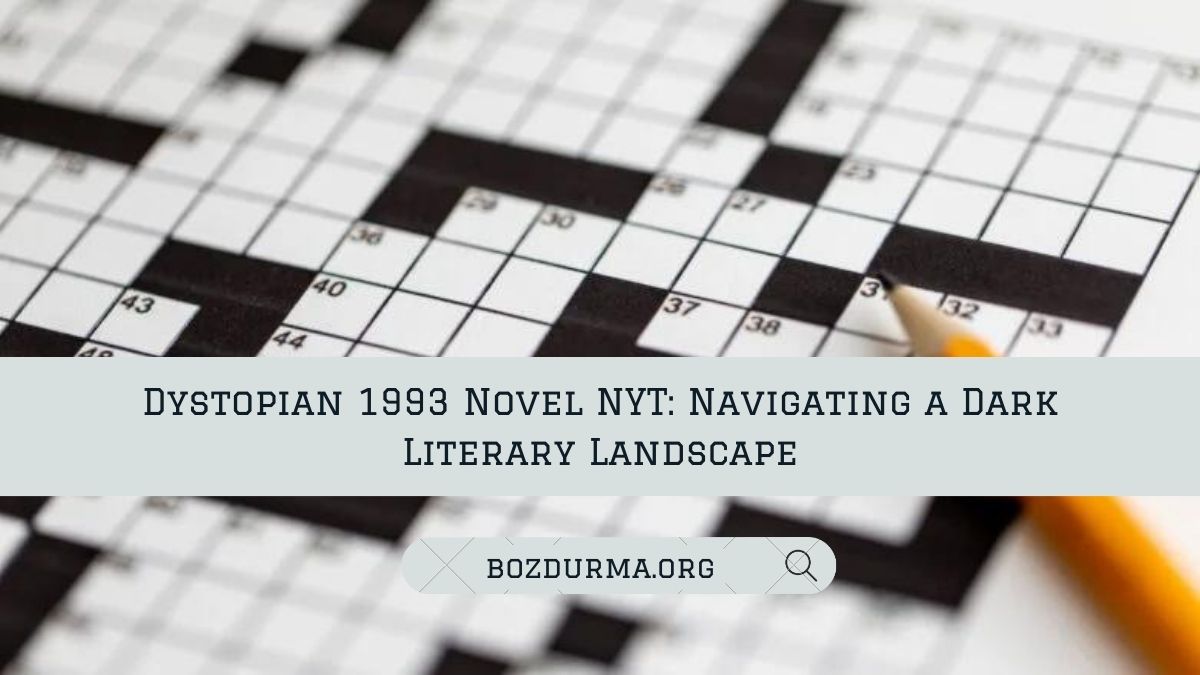
Dystopian 1993 Novel NYT: For many years, readers have become enthralled by dystopian fiction, which depicts future civilizations in a dark and occasionally terrifying light. The current study delves further into a fascinating New York Times (NYT)–set dystopian fiction from 1993. Its storyline, concepts, and cultural and literary effects will be dissected in the following essay.
1. The Emergence of Dystopian Fiction
Many dystopian books have their origins in political and social unrest. This subgenre of science fiction began to take shape in the early twentieth century, thanks to groundbreaking writers like as George Orwell and Aldous Huxley.
2. Key Elements of Dystopian Novels
Totalitarian regimes surveillance, societal differentiation, and the repressive use of technological advances are prominent themes in dystopian stories. All of these things come together to form a frightful future story.
3. Dystopian 1993 Novel NYT: Unveiling the Plot
Now we’ll zero in on one particular New York Times–based dystopian book from 1993. Dive inside the storyline, and you’ll find a society that strictly enforces social rules while stifling individual liberty. A dismal future is brought to life by the individuals and the environment.
4. Exploring Themes in Dystopian 1993 Novel NYT
The story is replete with themes including cultural norm critiques, the erosion of personal freedom, and reflections on current events. The book asks readers to consider the repercussions of unbridled authority and acts as a reflection of our society.
5. Impact and Influence of Dystopian 1993 Novel NYT
By looking at the novel’s cultural relevance and literary legacy, the essay assesses the novel’s effect on literature and society. We can learn a lot about the ways dystopian literature affects our shared consciousness by analyzing its impact.
6. Analyzing the Writing Style and Techniques
The author’s use of imagery, symbolism, and narrative structure in developing characters and the story as a whole creates an immersive experience for the reader. Our admiration for the author’s skill as a writer grows as we grasp these components.
7. Comparisons with Other Dystopian Novels
The novel’s distinctive features, such as its 1993 New York Times setting, can be better appreciated by drawing comparisons to other dystopian works. Putting the book in the larger perspective of dystopian fiction, this part offers a comparative study.
8. Author’s Perspective: Crafting the Dystopian World
From the Author’s Point of View: Creating the Dystopian World Interviews and personal comments with the author provide a window into how a dystopian world is conceptualized and written. Reading the book from the author’s point of view enriches our analysis.
9. Reader’s Interpretation: What Makes Dystopian Novels Enduring?
Many different perspectives are sparked by dystopian literature. In light of our dynamic society, this part delves into the personal connections readers make with the book and examines why dystopian stories continue to resonate.
9. Contemporary Relevance of Dystopian 1993 Novel NYT
We examine the novel’s ongoing relevance in the 21st century by making comparisons to contemporary culture. The essay delves into the ways the novel’s themes connect with current affairs, highlighting how it is both a classic and a thought-provoking literary work.
10. Critical Reception and Reviews
To understand how the literary world felt about the book, it is helpful to look at reviews and critical reactions. Its influence and status in literature are further bolstered by the accolades it has received.
11. The Evolution of Dystopian Literature Post-1993
Looking at how dystopian fiction has changed since 1993 reveals several new tendencies and subgenres. In the years after the publication of the New York–set novel, we catalog the seminal works that have molded the genre.
12. The Legacy of Dystopian 1993 Novel NYT: A Lasting Impact
In the last part, we look at how the dystopian novel has influenced subsequent generations. The lasting impact it has had on literature may be better understood by looking at how it has shaped subsequent works and how it figures into academic debates.
13. Conclusion
Finally, the 1993 New York City–-set dystopian novel is proof of the impact of science fiction. Its continued importance is due, in part, to the fact that it reflects human nature and delves into social concerns. Delving further into the dystopian genre and discovering the rich worlds created by creative writers is an invitation extended to us as readers.
14. FAQs
1. Is the dystopian novel from 1993 based on real events in the New York Times?
No, the book is fictional, and the New York Times is only a location in a dismal future.
2. How did the author come up with the ideas for the novel?
Speculative fiction, social observations, and the author’s own experiences all come together in the author’s insights.
3. What sets this dystopian novel apart from others in the genre?
The novel stands out because of its profound themes, distinctive narrative structure, and influence on dystopian literature that came after it.
4. Has the novel been adapted into other forms of media, such as movies or TV shows?
Discussions on possible adaptations have appeared, however, no formal adaptations have occurred as of yet.
5. Where can I find more dystopian novels with a similar impact?
A more complete picture of dystopian literature may be gained by reading novels written after 1993 and by prominent dystopian authors.
NEWS
Provides Mentorship at NYT: Nurturing Growth and Success
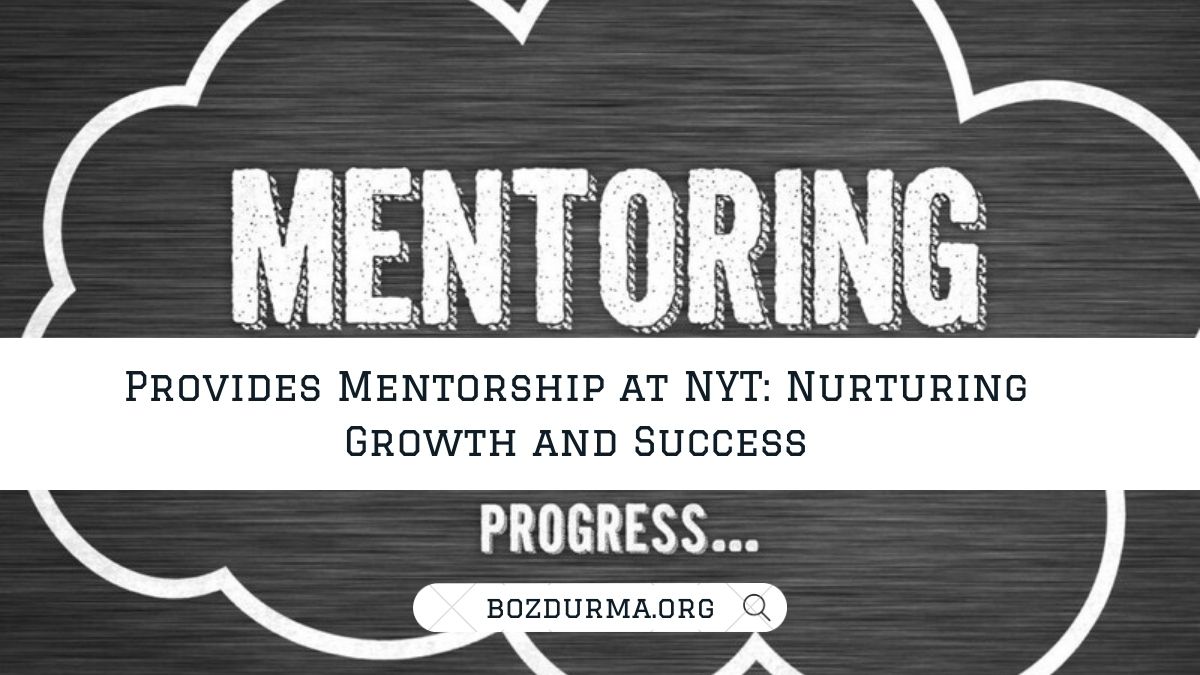
Provides Mentorship at NYT: Mentoring has become increasingly essential in helping people improve their lives and their careers. The value of someone to guide or mentor is significant in the contemporary world. In this piece, we take a closer look at the mentoring services run by the New York Times (NYT) to see the way they work and how they impact people.
1. Benefits of Mentorship
Provides Mentorship at NYT is more than just providing advice. With the knowledge, abilities, and viewpoints it imparts, it serves as a springboard for career advancement. Improving one’s confidence and skill sets are only two of the many advantages discussed in this article of having a mentor.
2. Mentorship in the New York Times
Incorporating mentorship into company culture is something that The New York Times has done since it knows how important it is. By sharing inspiring tales of mentoring at the New York Times, readers may learn firsthand how the esteemed organization has contributed to the professional success of its employees.
3. Navigating Challenges
Recognizing and overcoming obstacles is crucial while navigating mentoring, despite the many benefits it gives. For an additional fruitful mentor-mentee interaction, the article includes practical suggestions of how to overcome common difficulties that persons might encounter once mentoring.
4. Finding the Right Mentor
A vital choice is selecting an appropriate mentor. In this article, we provide a few suggestions on how to find mentors who are a good fit for you for everything with an emphasis on choosing someone with whom you have common beliefs and interests. Organizations and networks that serve as middlemen between mentors and mentees are the primary focus of the current study.
5. NYT’s Unique Approach
One way in which The New York Times stands apart is in its mentoring program. The article highlights the dedication of NYT to encouraging personal development by including testimonies from those who have profited from the organization’s mentorship programs.
6. Mentorship Beyond the Workplace
There is more to mentoring than just the workplace. Learn how mentorship may help you grow as an individual, expand your support system, and make friends outside of work in this section.
7. Success Metrics
There is a lot of omission when it comes to measuring the impact of mentoring. Success metrics are covered in the essay, giving readers concrete tools to measure how well mentorship relationships work.
8. How to Be a Good Mentor
When taking on a mentoring job, it is crucial to have a good grasp of important traits. Emphasizing the significance of empathy, attentive listening, and helpful criticism, this section describes the characteristics of an excellent mentor.
9. NYT’s Mentorship Initiatives
Highlighting diversity and inclusion, this section delves further into NYT’s mentorship commitment by examining certain projects. Real-life instances illustrate the power of mentorship in removing obstacles and opening doors for people from all walks of life.
10. Overcoming Common Mentorship Pitfalls
Being a mentor isn’t always easy. To help you have a stronger and longer-lasting mentoring relationship, this section lays out typical mistakes and how to avoid them.
11. The Future of Mentorship
As technology changes at a dizzying pace, new approaches to mentoring will shape the field’s trajectory. In this part, we make some educated guesses about how new technologies could mold mentorship programs to make them more inclusive and effective.
12. Conclusion
To sum up, Provides Mentorship at NYT, is a powerful catalyst for one’s professional and personal development. By highlighting the mutually beneficial nature of mentorship, the essay demonstrates how mentoring programs may strengthen communities and foster more social cohesion.
13. FAQs
1. What makes mentorship essential in today’s world?
Success in life and work requires the right kind of advice, insight, and perspective, all of which a mentor can give.
2. How can I find the right mentor?
Attempt to find common ground, common ideals, and shared objectives. Discover various mentoring programs and online resources.
3. What sets NYT’s mentorship initiatives apart?
Unlike other mentorship programs, NYT’s are based on actual success stories and a dedication to diversity and inclusion.
4. How can mentors overcome common challenges in the mentorship journey?
Keys to overcoming obstacles in mentoring include active listening, empathy, and providing constructive criticism.
5. What does the future hold for mentorship?
Technological progress is expected to influence the future of mentoring by expanding mentorship opportunities and enhancing its effectiveness.
NEWS
Marianne Goodland News: Unveiling the Journey of a Pioneering Journalist
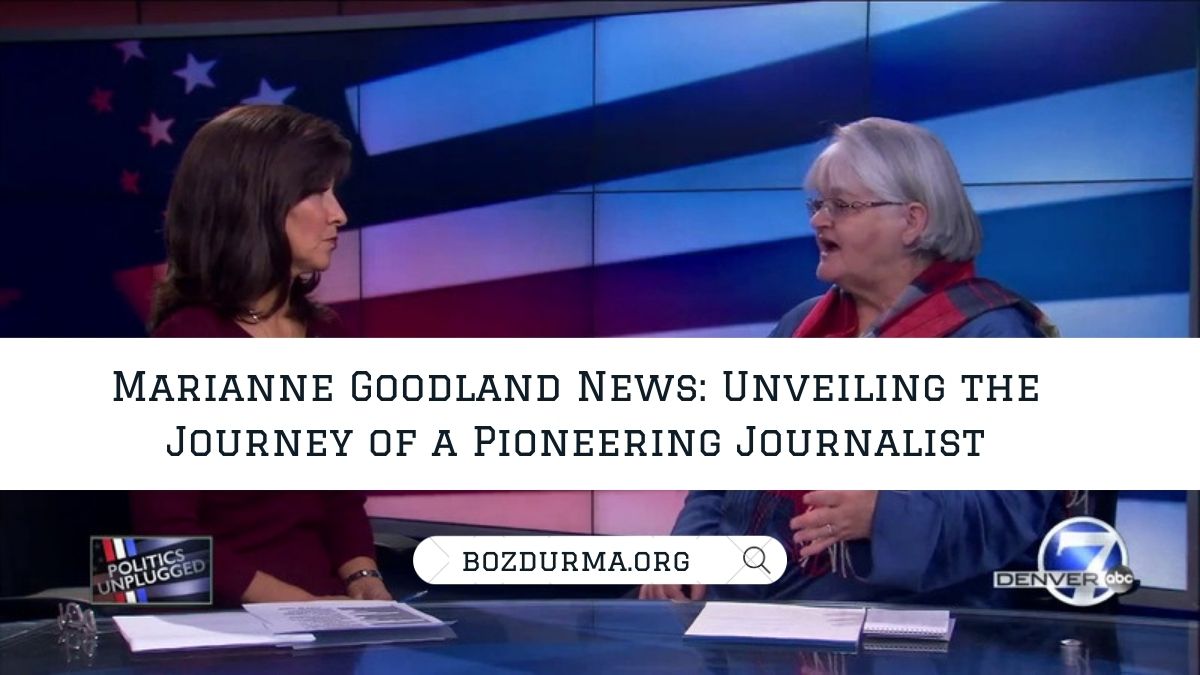
Marianne Goodland News is one of the most prominent figures in the ever-changing field of journalism. Her lasting impression on the media environment is a testament to her years of experience as a journalist. In this exploration of her life and work, we will discover the immense impact she has had on the journalism industry.
1. Introduction
To keep communities informed, Marianne Goodland has been an unwavering force, a name that is synonymous with journalism excellence. In a world where being up-to-date is paramount, her work exemplifies the impact of expertly written news articles.
2. Early Life and Career of Marianne Goodland
Beginning her journey with modest origins, Goodland’s thoughts and drive were shaped. Her professional trajectory is an inspiring story of perseverance and advancement, beginning with her early beginnings and ending with major achievements.
3. Notable Contributions in Journalism
Digging into Goodland’s back issues unearths a wealth of influential stories and investigative pieces. The community has been informed and discussions have been sparked by each input.
4. Marianne Goodland’s Reporting Style
The combination of her reporting style’s depth and clarity is truly unique. By delving deeper than her readers may imagine, Goodland ensures they are invested in the story she tells through her journalism.
5. Challenges Faced in the Field
Obstacles abound on the road to success. Along the way, Goodland demonstrates resilience by conquering challenges and coming out on top.
6. Recognition and Awards
Goodland’s career has been filled with several honors and awards. Her influence in journalism is evident from the accolades she has garnered.
7. Marianne Goodland’s Influence on the Media Landscape
The impact of Goodland on public opinion and media trends extends well beyond the acknowledgment of any one individual. Her work goes beyond just reporting and makes a substantial contribution to the larger discussion.
8. Current Projects and Endeavors
Even now, Goodland is making strides in the field of journalism. Her dedication to creating an impact and being relevant is evident in her current undertakings and activities.
9. Community Engagement
Volunteering is more than simply a job for Goodland; it’s also a way for him to connect with his audience on a personal level. It is admirable that she can connect the dots between news and communities.
10. Perspectives from Colleagues and Peers
Everyone in the industry knows how good Goodland is. Their perspectives illuminate the significance of teamwork, common ground, and the cumulative effect on the news industry.
11. Social Media Presence
Journalism in the modern digital era is greatly impacted by social media. Thanks to her mastery of various channels, Goodland has been able to connect with her audience on a deeper level and reach more people.
12. Future Outlook
Many intriguing possibilities have been revealed by speculation on Goodland’s future initiatives. Her impact on journalism is bound to go into unexplored realms as she keeps developing.
13. Addressing Controversies or Criticisms
Difficulties are inevitable in every line of work. Gracefully addressing critiques and disputes, Goodland provides a balanced viewpoint and stresses the significance of journalistic responsibility.
14. Impact on Local and National News
Beyond local communities, Goodland’s work influences national news cycles through a ripple effect. The widespread impact of her work exemplifies how interdependent contemporary journalism is.
15. Conclusion
Finally, Marianne Goodland News is a shining star in the journalism industry. Her story is a compelling illustration of a journalist’s commitment to their work; it is characterized by perseverance, influence, and involvement in the community. The enduring impact she has had on the media environment is very inspiring when we consider her accomplishments.
16. FAQs
1. Has Marianne Goodland received any international recognition for her work?
Although Goodland has mostly covered national and local news, her influential pieces have received recognition on a worldwide level, resulting in her appreciation and respect from people all over the world.
2. How does Marianne Goodland balance professional obligations with community engagement?
By emphasizing building an authentic relationship with her audience, Goodland deftly juggles her professional responsibilities with her community involvement. She can effectively do her job as a journalist because of this equilibrium.
3. What role does technology play in Marianne Goodland’s journalism career?
As a journalist, Goodland relies heavily on technology, which allows her to access a larger audience through several online mediums. If she wants her news stories to have more effect, she uses technology to its fullest potential.
4. How does Marianne Goodland handle criticism, and what lessons can others learn from her approach?
In a controlled and deliberate manner, Goodland responds to criticism, highlighting the significance of journalism’s responsibility. Those who aspire to be journalists may learn a lot from her capacity to absorb criticism and use it to improve their work.
5. What advice does Marianne Goodland offer to aspiring journalists entering the industry?
To those who aspire to be journalists, Marianne Goodland News says to always be open-minded, strong-willed, and dedicated to the truth. The fundamental principles that underpin both ethical and effective journalism are emphasized in her counsel.
NEWS
Casual Cloth NYT Guide

Comfort and style are now instantly recognizable as Casual Cloth NYT in the constantly changing world of fashion. Understanding the subtleties of informal clothing is crucial in an atmosphere that is increasingly embracing easy refinement. Explore the fascinating world of informal attire in this comprehensive book that delves into its origins, current fashions, and everyday inspirations.
1. Why Casual Cloth NYT?
What makes casual wear particularly appealing in today’s rapid-fire, time-poor culture is the way it successfully combines practicality with aesthetics. These days, it’s no longer sufficient to just dress formally; customers want comfortable clothes, that make them feel good and let them move freely.
2. Evolution of Casual Wear
The importance of casual attire can only be fully understood by looking at how it has changed over time. Resisting the strict conventions of formal attire is where casual clothes originated. From the denim movement of the ’60s to the current athleisure trend, casual wear has always been a rebellion against societal norms as well as a fashion statement.
3. Casual Cloth Trends
Every style, including casual clothing, is subject to change. Get a feel for sustainable textiles and baggy hoodies, two of the hottest items in casual wear right now. Continue to stay trendy while exuding the carefree spirit that characterizes casual attire.
4. Dressing Casual for Different Occasions
Comfortable clothing is not a cookie-cutter option. Learn how to pull off casual wear with confidence for every situation, including the office. Discover the key to looking polished while still feeling comfortable in your skin.
5. Benefits of Casual Attire
Casual clothing has several benefits, not the least of which is how comfortable it is. Find out how easygoing attire may improve your self-esteem, confidence, and general health.
6. Sustainable Casual Fashion
Learn about eco-friendly, laid-back style in an age of renewed concern for the planet. Read more on the top casual clothes manufacturers’ commitment to ethical business methods and environmentally conscious fabric selections.
7. Casual Cloth Brands
Find out more about well-known labels that have had an impression on the casual dressing market. Explore the wide range of alternatives accessible for individuals who value the art of dressing casually with style, from legendary classics to new names.
8. How to Mix and Match Casual Pieces
A multi-purpose closet doesn’t have to be difficult to put together. Gain insight into the art of casual item mixing and matching to expand your wardrobe possibilities and achieve a sophisticated, carefree style at all times.
9. Casual Clothes for All Ages
Anyone may wear casual attire regardless of their age. Fashionable casual attire that accentuates personal style may be found here for all ages, from hip youth to elegant retirees.
10. Impact of Casual Wear on Society
Take note of the societal changes prompted by the rise of casual clothes. Be aware that our clothing choices mirror larger social shifts, such as questions of gender standards and the redefinition of professionalism.
11. Balancing Casual and Formal
Even while being casual is fun, there are times when you need to dress a little more formally. The key to being ready for anything is mastering the art of mixing and matching formal and casual wear.
12. Online Shopping for Casual Clothes
Learn about some of the various advantages of buying casual apparel online, including the ease and choice it provides. Delight in the convenience of purchasing for clothes via the Internet, from perusing the most recent styles to having what you buy delivered straight to your front door.
13. Casual Cloth for Different Climates
To stay warm in different regions, you need to change your casual outfit. Find out how to adapt your style and comfort level to each season, be it scorching summers or freezing winters.
14. Maintaining Casual Wardrobes
Taking a little extra care to maintain the quality of your casual clothing is essential. Find out what works and what doesn’t when it comes to casual clothing maintenance so that your favorite items endure for years.
15. Conclusion
In a society where ease and elegance coexist, casual wear is more than simply a trend; it’s a way of life. Casual Cloth NYT offers a lot: comfort, ease, and confidence. Allow your clothing to mirror the ever-changing character of your character by combining casual and fashionable elements.
16. FAQs
1. Can I wear casual clothes to the office?
Sure thing! With the rise of the modern workplace, many companies have begun to embrace a more casual dress code that still allows employees to look their best.
2. Are sustainable casual brands expensive?
Affordable solutions that promote eco-friendly methods are available alongside more expensive sustainable businesses.
3. How can I mix and match my casual pieces effectively?
Learning your color pallet and playing around with different layers is a good place to start. You may get a one-of-a-kind style by mixing and matching unexpected pieces.
4. Is online shopping for casual clothes reliable?
Indeed, there is a plethora of options with the bonus of ease when purchasing online. Seek out trustworthy websites that have received favorable ratings to guarantee a satisfying encounter.
5. Can I wear casual clothes in a formal setting?
What happens is incident-specific. There are still certain places that call for a more formal dress code, even if casual attire is usually OK most of the time.
-

 TECHNOLOGY5 months ago
TECHNOLOGY5 months agoFacebook Login Page: A Gateway to Social Connectivity
-

 BUSINESS6 months ago
BUSINESS6 months agoConnect Shopify Forms to HighLevel: Streamlining Your Business Processes
-
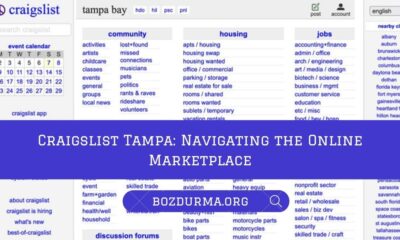
 HOME5 months ago
HOME5 months agoCraigslist Tampa: Navigating the Online Marketplace
-
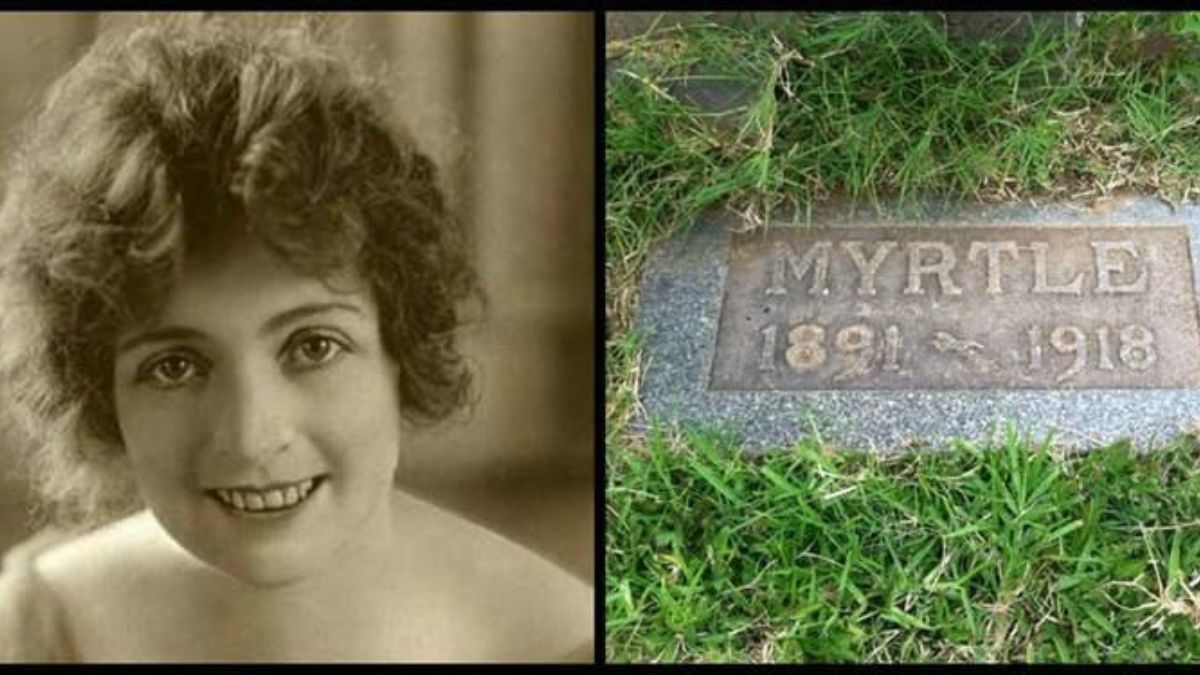
 CELEBRITY8 months ago
CELEBRITY8 months agoMyrtle Gonzalez: A Trailblazer in Early Cinema
-

 HOME5 months ago
HOME5 months agoThe Clear Advantage: Unpacking the Benefits of Clear Backpack
-
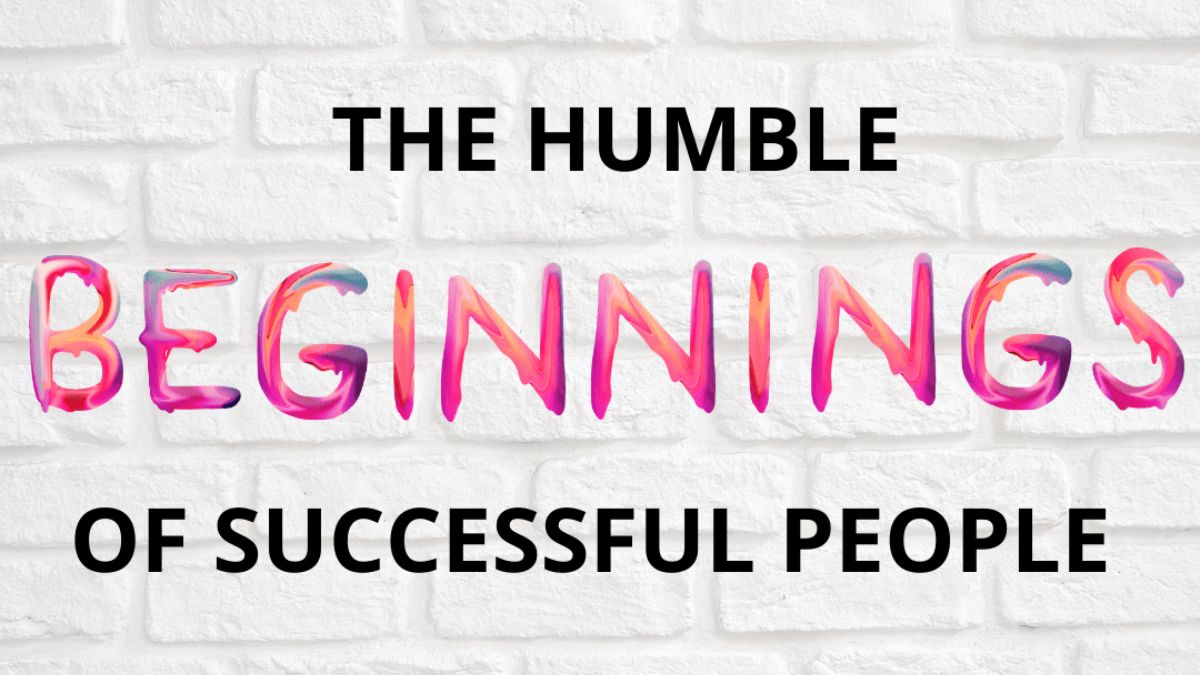
 EDUCATION9 months ago
EDUCATION9 months agoHumble Beginners: Navigating the Path to Success
-

 HOME5 months ago
HOME5 months agoSnow Storm: Navigating the Whirlwind
-

 BUSINESS6 months ago
BUSINESS6 months agoPfizer Layoffs: Navigating Challenges and Embracing Change
